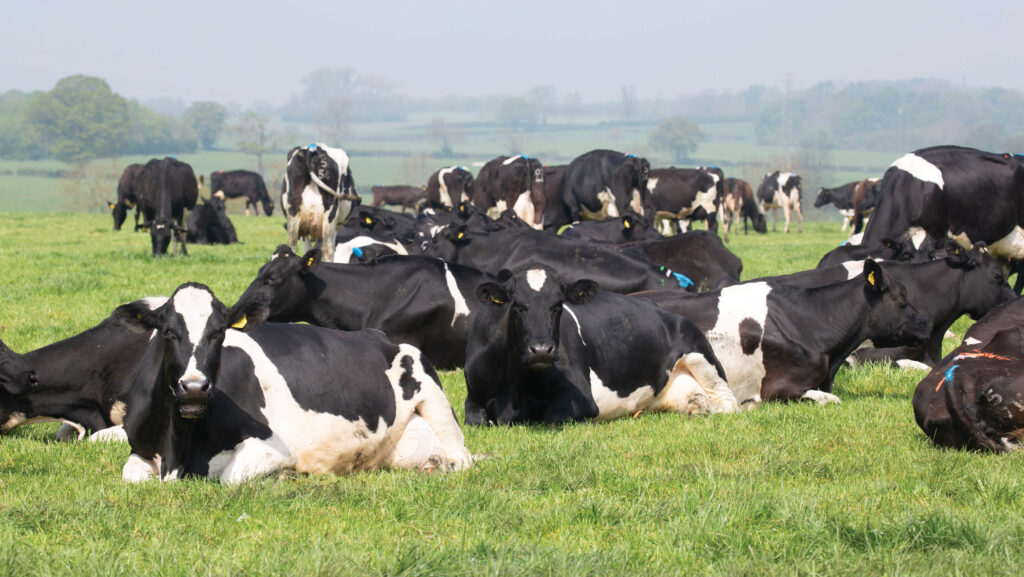Advice on maintaining a healthy rumen
 © Tim Scrivener
© Tim Scrivener The dairy cow’s rumen is a large bioreactor, home to a diverse and dense population of microbes.
A single teaspoon of ruminal content contains 150bn micro-organisms, which act in co-ordination to derive nutrition from otherwise indigestible plant compounds fed to the cow.
Under anaerobic conditions, complex polysaccharides in plant material are degraded into volatile fatty acids which can be used as an energy source by the cow. In return, the microbes utilise the byproduct of this fermentation – energy.
This describes the symbiotic relationship between the dairy cow and her gut microflora.
See also: How feeding methane inhibitors can help cut emissions
Rumen microbiome
The dairy cow’s feed efficiency, milk yield, health and lifetime productivity are all affected by her rumen health.
Disharmony of the microbiota can result in metabolic disorders such as ruminal acidosis, bloat and gastric ulceration, as well as secondary disease in the liver and lungs.
To achieve maximum health and productivity, consideration of the cow’s ruminal microbiome is paramount.
The diversity and composition of this microbiome is dependent on both genetics and environment. Heritable components of the microflora offer the potential to manipulate it through genetic selection and breeding.
Feed type, ruminal pH and mycotoxin exposure are environmental factors that strongly impact the composition of the microflora.
Impact of low rumen pH
Feeding a high-concentrate diet to drive milk yield results in a more acidic rumen.
This environment promotes the proliferation of acid-producing bacteria, further reducing the rumen pH and disrupting the population of micro-organisms.
Subacute ruminal acidosis describes a ruminal environment with a pH below 6 and is associated with loss of production and poor body condition.
A dairy cow with a ruminal environment with a pH below 5.5 is likely to show signs of clinical acidosis, including poor co-ordination, recumbency and death.
Buffer
Rumen pH can be stabilised through the accurate and consistent feeding of a ration with a well-balanced forage-to-concentrate ratio.
Avoiding sudden diet changes or “slug-feeding” methods will minimise the short-term fluctuations in a dairy cow’s ruminal pH, and ensuring her diet is well mixed will prevent sorting and overconsumption of concentrate.
Saliva contains sodium bicarbonate and so acts as a buffer, increasing the pH of the ruminal environment.
On average, a dairy cow will produce 100 litres of saliva daily during the process of rumination (cudding).
Rumination can be encouraged through provision of forage with longer fibre length and through management efforts aimed at improving cow comfort and lying times.
Mycotoxin risk
Mycotoxins are toxic metabolites produced by fungi, which contaminate feedstuffs.
The dairy cow’s ruminal microflora provides her with a degree of protection against the detrimental effects of these toxins through production of enzymes able to degrade them.
Despite this, high doses of mycotoxins can disturb the constitution and function of the micro-organism population. This will result in reduced yields, poorer fertility and increased disease.
A diverse microbiome offers the dairy cow resilience against insult by mycotoxins. This can be achieved through management strategies aimed at stabilising and promoting this diversity.
Monitoring
Disruption to the ruminal microbiome is a consideration during any health event.
Close monitoring of faecal consistency and length of fibre in faeces will identify ineffective digestion secondary to disruption of the microflora.
A diverse and resilient ruminal microbiome will recover from minor perturbations.
For more severe disturbances, probiotics can be administered or transfaunation (the process of transferring ruminal contents from a healthy cow into a sick cow) can be performed.
